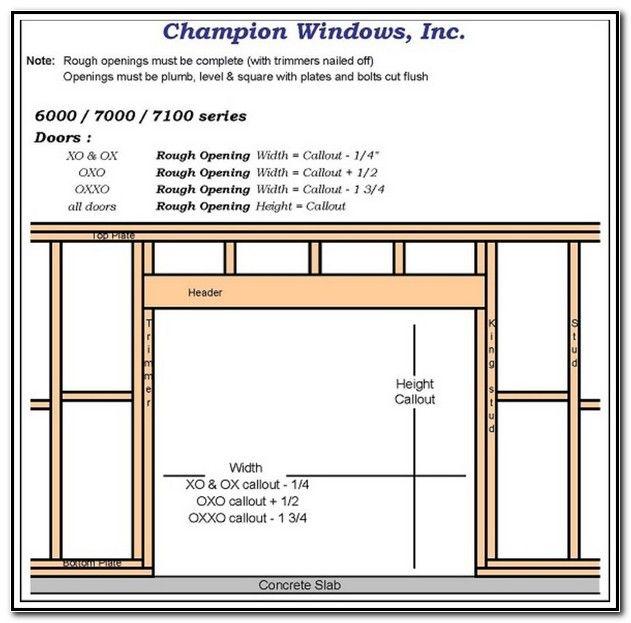Unlock the secrets to selecting the perfect garage door size with our comprehensive guide to Garage Door Rough Opening Sizes. Discover essential tips and insights for ensuring a seamless fit for your garage door installation!

Introduction
Choosing the right size for your garage door is crucial for achieving a proper fit and ensuring smooth operation. One of the key considerations in this process is understanding the rough opening size, which refers to the dimensions of the opening in the wall where the door will be installed. In this guide, we’ll delve into the intricacies of garage door rough opening sizes, providing valuable information to help you make informed decisions for your next garage door project.
Understanding Garage Door Rough Opening Sizes
The rough opening size of a garage door is determined by the dimensions of the framed opening in the wall where the door will be installed. It is essential to measure this opening accurately to ensure that the door fits properly and operates smoothly. The rough opening size includes both the width and height of the opening, as well as other factors such as headroom and side room clearance.
Factors to Consider When Determining Rough Opening Sizes
Several factors influence the size of the rough opening required for a garage door installation:
- Door Size: The dimensions of the garage door itself, including its width, height, and thickness, will dictate the size of the rough opening needed to accommodate it.
- Headroom Clearance: The amount of space required above the door opening for the door to operate smoothly without obstruction.
- Side Room Clearance: The clearance needed on either side of the door opening to accommodate the tracks and other hardware.
- Backroom Clearance: The space required behind the door opening for the door to fully open and close without obstruction.
Garage Door Rough Opening Sizes: Key Considerations
When determining the rough opening size for your garage door, consider the following:
- Standard Sizes: Garage doors are available in standard sizes ranging from single-car to double-car openings. Knowing these standard sizes can help you determine the appropriate rough opening dimensions for your garage.
- Custom Sizes: If your garage opening does not conform to standard dimensions, you may need to order a custom-sized door. In such cases, precise measurements of the rough opening are essential to ensure a proper fit.
- Professional Consultation: When in doubt, consult with a professional garage door installer or contractor. They can assess your garage’s unique specifications and recommend the most suitable door size and rough opening dimensions for your needs.
Tips for Measuring Garage Door Rough Opening Sizes
To ensure accurate measurements for your garage door rough opening, follow these tips:
- Use a Tape Measure: Measure the width and height of the framed opening in the wall where the door will be installed. Take multiple measurements to ensure accuracy.
- Account for Clearances: Consider the required headroom, side room, and backroom clearances when determining the rough opening size.
- Double-Check Your Measurements: Before ordering your garage door, double-check your measurements to ensure they are accurate. An improperly sized rough opening can result in a door that doesn’t fit properly or operate smoothly.
Read too: Why Are My Garage Doors Opening By Themselves? Troubleshooting Guide
Conclusion
Understanding garage door rough opening sizes is essential for ensuring a seamless and successful door installation. By considering factors such as door size, headroom clearance, and side room clearance, you can determine the correct rough opening dimensions for your garage and enjoy a properly fitted and functioning door for years to come.



Leave a Reply